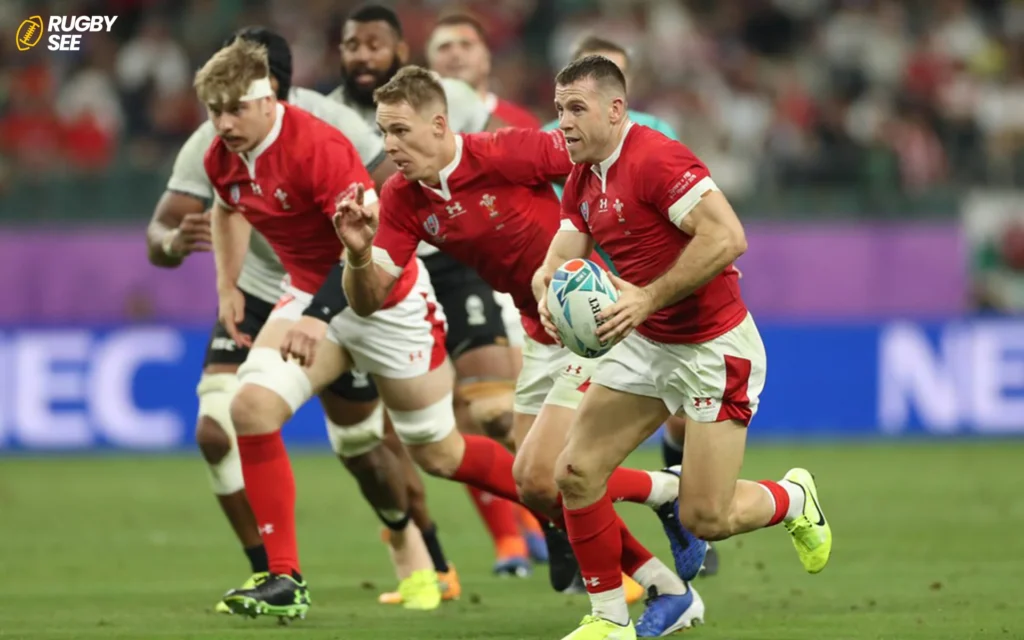In the world of sports, rugby stands out for the sheer physical strength and impressive strength of its players. From powerful forwards to speedy defenders, the game requires a unique combination of physical strength, agility and endurance. This article from Rugbysee explores the question of how strong rugby players really are, looking at aspects of strength training, the physical demands of the game, and how rugby athletes compare to athletes from other sports.
The Foundation of Rugby Strength
Rugby players are among the strongest athletes in the world, but their strength is not just about lifting weights or how much they can bench press. It’s a comprehensive blend of power, endurance, and mental toughness. Strength in rugby is multifaceted, involving:
- Muscular Strength: The ability to exert force against resistance. Rugby players need significant muscular strength to tackle opponents, scrum effectively, and break through defensive lines.
- Power: Power is strength in motion. It combines speed and force, essential for explosive movements like sprinting, jumping for lineouts, and delivering powerful hits.
- Endurance: Rugby matches last 80 minutes, requiring players to maintain their strength levels throughout the game. This endurance is a testament to their ability to perform high-intensity efforts repeatedly with minimal fatigue.
Strength Training for Rugby Players
Rugby players undergo rigorous training regimes that are as diverse as the game itself. A typical strength training program for a rugby player includes:
- Compound Lifts: Exercises like squats, deadlifts, and bench presses are staples because they simulate the multi-joint movements players perform on the field.
- Olympic Lifts: Clean, jerk, and snatch exercises are crucial for developing explosive power, improving the speed and force of tackles, and enhancing jumping ability.
- Bodyweight Exercises: Push-ups, pull-ups, and burpees enhance functional strength and muscle endurance, vital for the sport’s physical demands.
- Plyometrics: Jumping exercises increase leg power, critical for sprinting and explosive starts.

The Role of Nutrition in Building Rugby Strength
Nutrition plays a critical role in building and maintaining the strength levels of rugby players. High protein intake is essential for muscle repair and growth, while carbohydrates provide the energy needed for intense training sessions and matches. Hydration and recovery nutrition are equally important to ensure players can recover quickly and perform at their best.
Measuring Rugby Players’ Strength
The strength of rugby players can be measured in various ways, from traditional weightlifting metrics to more specialized tests tailored to the sport’s unique demands. For example, bench press, squat, and deadlift numbers provide a baseline of a player’s strength, while sprint tests, vertical jumps, and agility drills offer insight into their power and speed. Additionally, the ability to maintain performance levels throughout a game gives a real-world indication of a player’s endurance and strength.
Rugby Strength Compared to Other Sports
When comparing the strength of rugby players to athletes in other sports, it’s clear that rugby players possess a unique combination of strength, power, and endurance. For instance, while powerlifters may lift heavier weights, rugby players excel in applying their strength dynamically and over extended periods. Similarly, while marathon runners have exceptional endurance, they typically lack the muscular strength that rugby players possess.
The Mental Strength of Rugby Players
Physical strength is only part of the equation in rugby; mental toughness is equally important. The ability to push through pain, fatigue, and the psychological pressure of competition is what often separates the good from the great. Rugby players must be resilient, adaptable, and fiercely competitive, qualities that are honed through experience and a strong team culture.

The Evolution of Strength in Rugby
The nature of strength in rugby has evolved significantly over the years. Advances in sports science, nutrition, and training methodologies have seen players become stronger, faster, and more powerful than ever before. This evolution has not only enhanced the spectacle of the sport but also increased the physical demands on players, making strength and conditioning an integral part of modern rugby.
The Impact of Strength on Rugby Tactics and Gameplay
The strength of rugby players significantly influences tactics and gameplay. Strong forwards are crucial in scrums and lineouts, where their power can dominate the opposition, securing possession and territory. In open play, their ability to break tackles and drive through defenders creates opportunities for their team. Meanwhile, the backs rely on speed and agility, combined with strength, to execute swift, powerful runs and tackle opponents effectively. The blend of strength among different positions leads to diverse strategies, making rugby a complex and multi-dimensional sport and if you want to know about getting CTE in Rugby read do rugby players get cte.
Strength Training Adaptations for Young Rugby Players
For young rugby players, strength training must be carefully managed to balance development with injury prevention. The focus is on building a solid foundation of functional strength, emphasizing proper technique and gradually increasing load. Plyometrics and bodyweight exercises are particularly beneficial for developing power and endurance without overloading young muscles and joints. This approach not only enhances their physical capabilities but also instills a lifelong appreciation for the importance of strength and conditioning in the sport.
The Role of Recovery in Maintaining Strength
Recovery is an essential component of maintaining and building strength for rugby players. High-intensity training and competitive matches place significant stress on the body, making recovery practices critical. Techniques such as active recovery, stretching, foam rolling, and adequate sleep are integral to the recovery process, helping to repair muscles and prepare the body for the next challenge. Nutrition, particularly protein intake, plays a vital role in muscle recovery, ensuring players rebuild stronger after each session.
The Future of Strength in Rugby
As sports science continues to advance, the future of strength in rugby looks promising. Innovations in training techniques, wearable technology, and personalized nutrition plans are set to further enhance players’ strength and performance. Genetic testing may also play a role, identifying individual strengths and weaknesses, allowing for even more personalized training programs. Moreover, the growing emphasis on holistic athlete development, including mental strength and resilience training, will continue to elevate the performance of rugby players on a global scale.

The Global Perspective on Rugby Strength
Rugby’s global reach has led to interesting variations in how strength is developed and valued in different regions. For example, Pacific Island teams are renowned for their natural physicality and powerful playing style, while European teams may focus more on technical strength and strategic gameplay. This diversity enriches the sport, offering a tapestry of playing styles and approaches to strength and conditioning that reflect the unique cultures and philosophies of rugby-playing nations worldwide.
Encouraging a Balanced Approach to Strength
It’s essential for rugby players and coaches to adopt a balanced approach to strength training, recognizing that excessive focus on one aspect of strength can lead to imbalances and increased injury risk. A comprehensive training program that includes strength, power, endurance, flexibility, and agility training, coupled with adequate recovery and nutrition, is key to developing well-rounded athletes who can perform at their best and if you want to know about getting Consussions in Rugby read Do Rugby Players Get Concussions.
Rugby players are undoubtedly among the strongest athletes in the world, possessing a unique blend of muscular strength, power, and endurance. Their strength is not just physical but mental, forged in the heat of competition and the camaraderie of the team. The rigorous training, disciplined nutrition, and mental fortitude required to excel in rugby highlight the extraordinary capabilities of these athletes. As the sport continues to evolve, the quest for strength, in all its forms, remains at the heart of rugby’s enduring appeal.
In understanding the strength of rugby players, we gain insight into the dedication, resilience, and passion that drive these athletes. It’s a reminder that strength is not just measured in pounds or seconds but in the ability to overcome challenges, push limits, and strive for excellence on and off the field.
Top of Form










